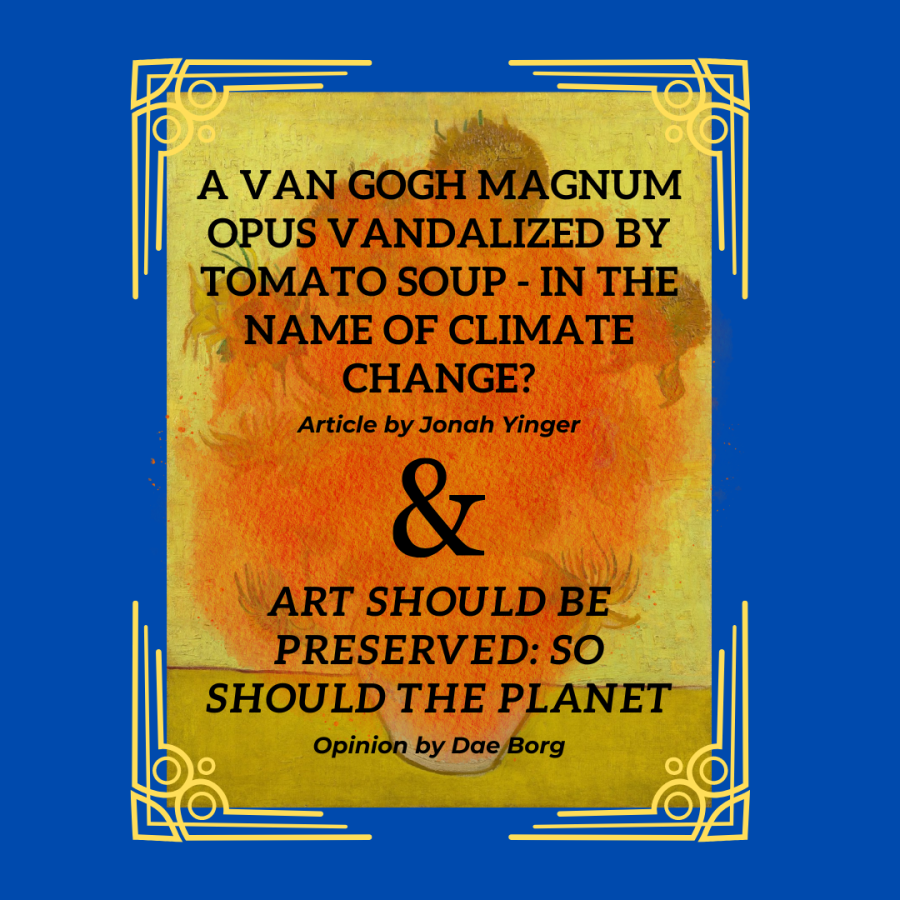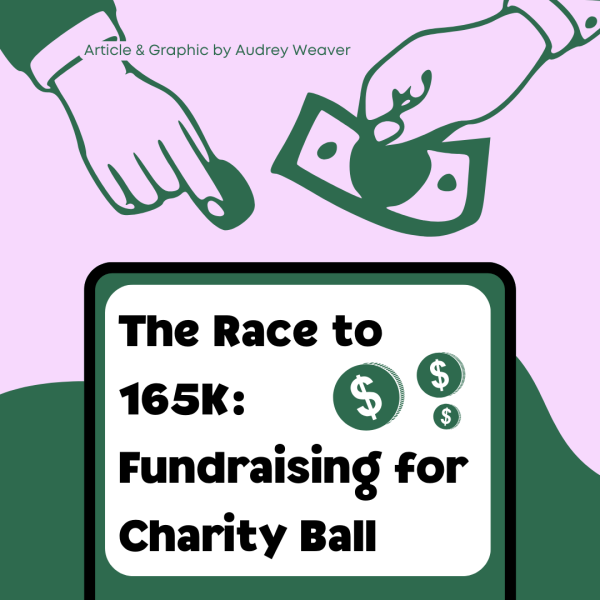A Van Gogh Magnum Opus Vandalized by Tomato Soup – In The Name of Climate Change?
A Van Gogh Magnum Opus Vandalized by Tomato Soup – In The Name of Climate Change?
By Jonah Yinger
“What is worth more, art or life? Is it worth more than food? Worth more than justice?” These questions echoed through London’s National Gallery as two Just Stop Oil activists vandalized Van Gogh’s 1888 Sunflowers. Their weapon: tomato soup.
On Friday, October 14th, onlookers gasped as they watched two climate change protesters throw cans of condensed Heinz tomato soup at the world-renowned artist’s painting. Gluing their hands to the wall underneath it, they lectured the crowd on the importance of art versus the reversal of damage to the environment until they were escorted away by security.
Anna Holland and Phoebe Plummer, the pair of demonstrators, were arrested and charged with criminal damage. These are just two of the 28 arrests of Just Stop Oil protestors in the past month, who are campaigning for the British government to stop its oil and gas projects.
This recent act of vandalism is not an isolated attack. The paintings The Last Supper and Massacre In Korea have also had hands glued to them in recent months. In July, John Constable’s 1821 The Hay Wain was another of Just Stop Oil’s targets. Two activists glued themselves to its frame and covered the landscape painting with paper depicting life post-climate change. The frame and painting both sustained damage. One of the vandals is facing claims of hypocrisy after she racked up 50,000 jet miles vacationing to several Pacific Islands, emitting 13 tons of carbon dioxide into the atmosphere.
Sunflowers, estimated to be worth $81 million, sustained no damage as a panel of glass protected the canvas from the soup. It was cleaned and replaced on the gallery wall later that day.
Many critics of the recent demonstrations do not understand the purpose of attacking priceless works of art. Replies to Just Stop Oil’s Twitter update express frustration and confusion, some saying “We all agree that the planet needs to be protected. You don’t need to destroy a priceless artwork to make that point.” and “Go throw things at something ugly.”
What some climate change activists fear is that protests like these will turn people off from the cause: conservation of the Earth. Since Friday’s demonstrations, the British government has made no changes to their future oil and gas plans.
Art Should be Preserved: So Should the Planet
By Dae Borg
Two London activists attacked Van Gogh’s ‘Sunflowers’ painting on Friday, October 14th to spread awareness about the climate crisis. After splashing a can of soup on the glass-covered painting and gluing their hands to the wall beneath the artwork, one of the activists, Phoebe Plummer asked the people viewing the art, “Are you more concerned about the protection of a painting, or the protection of our planet and people?” This question, in this audience, was a poor choice, as most people who witnessed the event, whether in person or virtually, would have most likely responded with “both.” Before completing their actions for spreading awareness, the activists removed their jackets to reveal Just Stop Oil t-shirts. Just Stop Oil is a partnership of groups working together to demand that the UK government halts all future licensing for the production of fossil fuels.
A spokesperson for Just Stop Oil, Alex De Koning, mentioned in an interview, “we chose this painting because we wanted to highlight the connection between the cost of living crisis… and the climate crisis. We have thrown soup at it because in all honesty people are going to have to choose between heating and eating this winter and that can be so easily avoided through insulation and switching to renewable energies…” Art is not what we should be attacking to bring attention to the human-induced conflicts of our planet. While I understand the activists’ frustration, this just seems like vandalism for no reason. Many artists and art-lovers are already very involved in the issues of the climate crisis and play a huge part in spreading awareness. So, when did art become the villain?
While art itself isn’t the problem, the industry isn’t without its flaws, which I thought may have been another one of the activists’ concerns; however, people viewing art causally should not be the main target. One of the ways these activists could have better combated their action is to target the corporations responsible for the carbon-intensive travel necessary to view the art. No matter how difficult it is to confront, and how much regular people feel the need to take responsibility for catastrophic conflicts such as the climate crisis, we, individually, are not the problem. Yes, money could be spent in more thoughtful ways than on art worth millions of dollars, and the people who may be viewing the art could use their money to invest in green technology, or something else beneficial for the planet. They may even benefit from learning about the climate crisis, but that doesn’t change the fact that innocent art that demonstrates the wonderful parts of humanity could have been damaged or destroyed by this action that seems to me relatively unrelated to the climate crisis.
The conflicts that humans have created for our planet should absolutely be discussed and actions like these ones are not irrational, but when we go so far as to damage something that has such meaning to humanity in order to make a point, we are missing the opportunity to create real change for the benefit of our planet and humanity.
We unfortunately live in a world where everyone is forced to support these corporations whether they want to or not, so in order to make change, we have to do as much as we can to support green technology and find sustainable ways to function as a society. Throwing tomato soup on Van Gogh’s painting sparked a large conversation on what activism should and shouldn’t look like. As far as doing good for the climate crisis, I think these two activists failed to accomplish the goal they set for themselves in a way that makes people think about how they can contribute more towards the issues of our planet.
Your donation will support the student journalists of Enloe Magnet High School, allowing us to cover our annual website costs. We are extremely grateful for any contribution, big or small!

(She/her)
Dae Borg is a senior who has a love for the Earth, wildlife, the arts, and meeting new people. She enjoys writing about global environmental...

(He/him)
This is Jonah's third year writing for the Eagle's Eye and his second on the editing team. Aside from writing and editing bomb articles, Jonah...


















